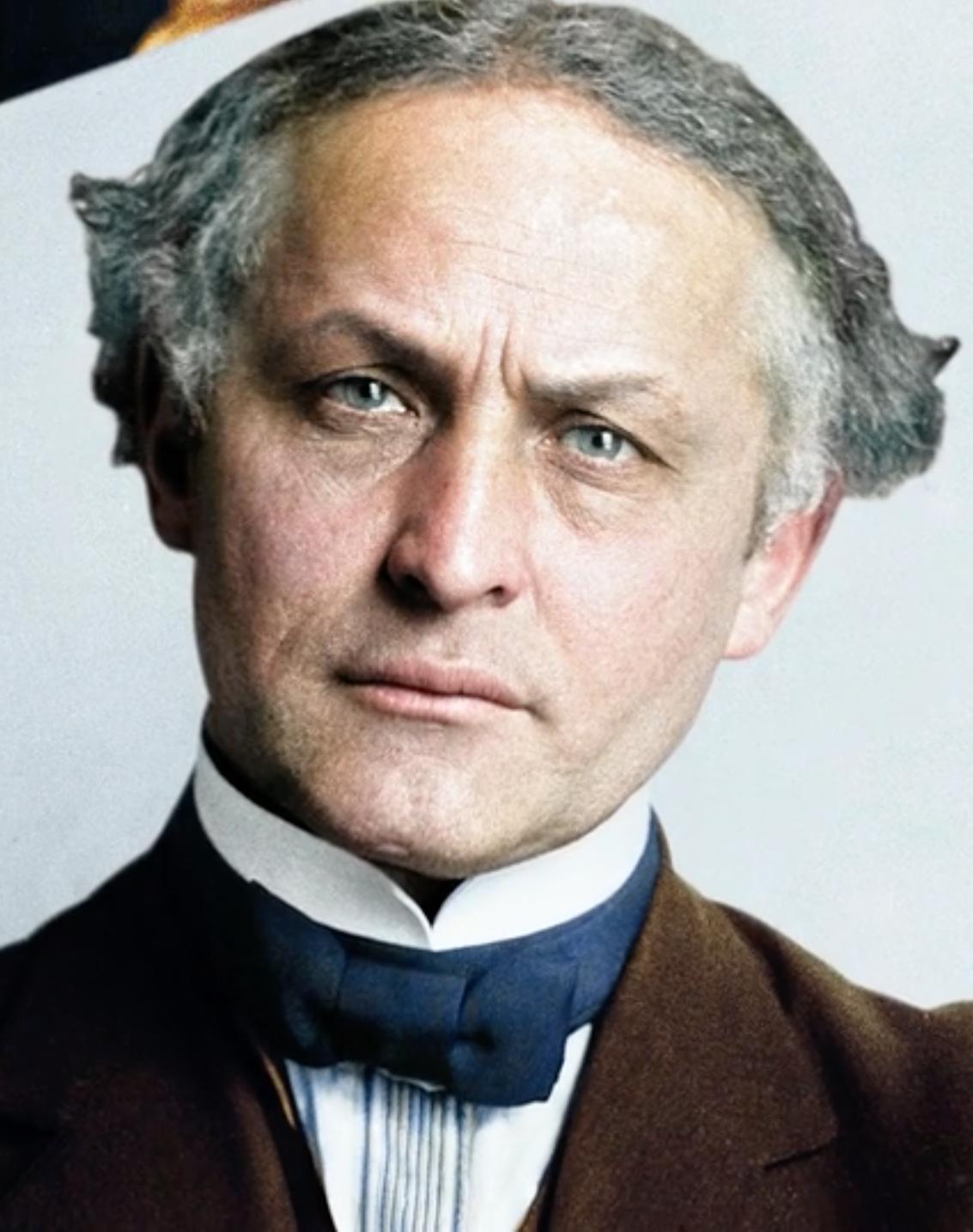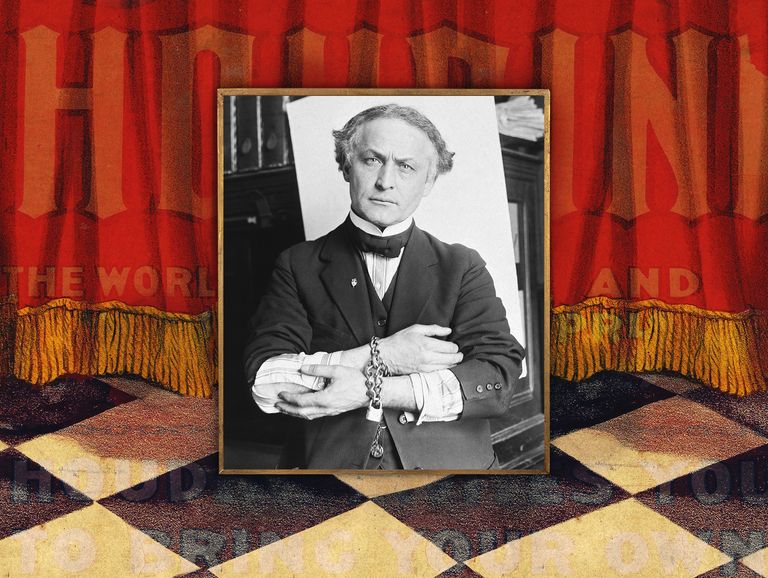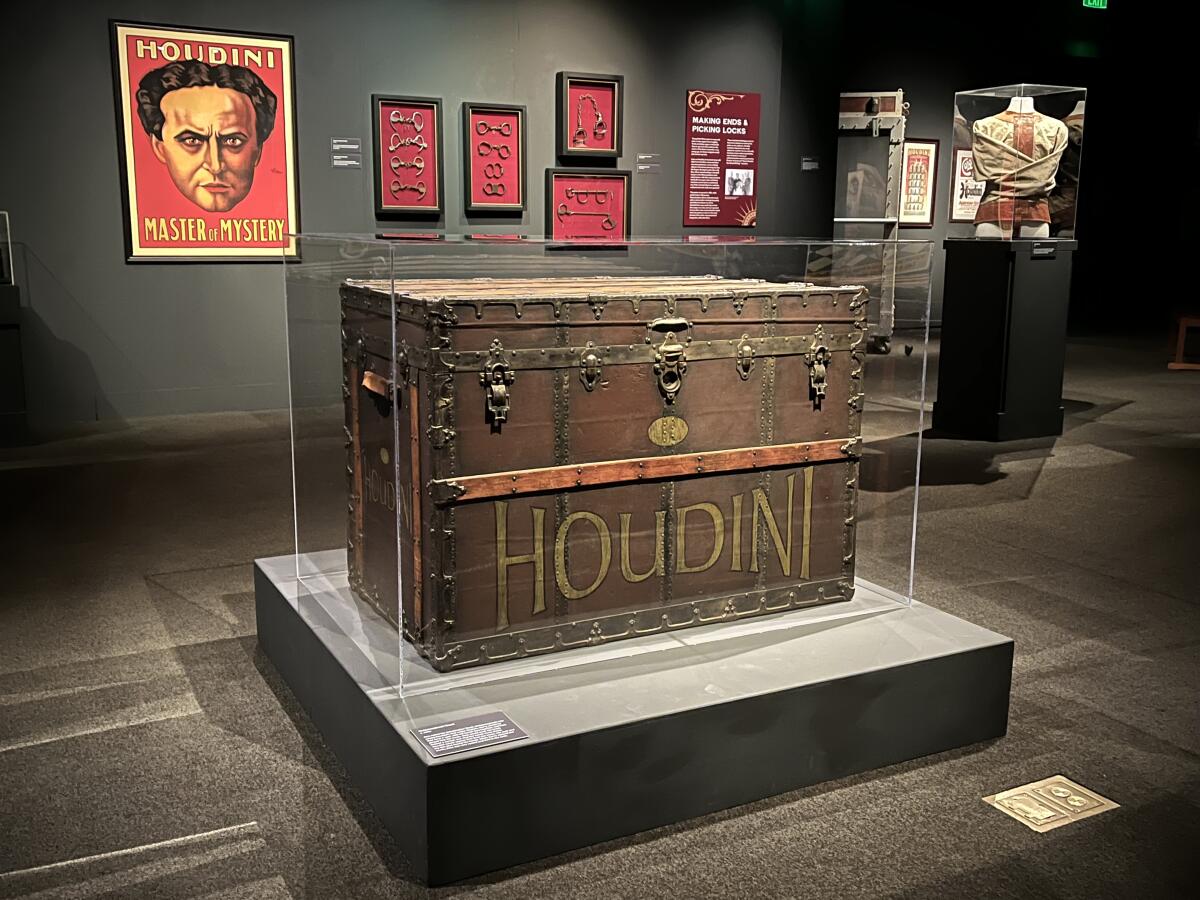
For a century, the world has marveled at the legendary escapes and mysterious death of Harry Houdini. The man who defied shackles, water tanks, and even death itself left behind one final puzzle: the true cause of his demise. Was it murder, misfortune, or something even stranger? Now, after 100 years, new evidence from medical experts finally reveals what really happened in Houdini’s final days—a truth no one expected.
From Budapest to the American Dream
Harry Houdini was born Erik Weisz on March 24, 1874, in Budapest, Hungary. The fourth of seven children, Erik’s early life was marked by struggle and uncertainty. His father, Rabbi Mayer Samuel Weisz, faced rising anti-Semitism and economic hardship in Hungary. In 1876, the elder Weisz made a desperate decision: he left his family behind and sailed to America, hoping to carve out a better future.
For two years, Cecilia Steiner Weisz, Erik’s mother, endured poverty and isolation in Budapest. In 1878, she gathered her children and braved a sweltering 15-day voyage to New York City, arriving in the midst of a record heatwave. The family soon traveled to Appleton, Wisconsin, where Rabbi Weisz became the town’s first rabbi. The Weisz family settled on Appleton Street—now Houdini Plaza—and began their new life.
Young Erik quickly showed a fascination for locks and puzzles, picking cabinet locks and dismantling household objects. But in 1882, the family’s fragile stability shattered when Rabbi Weisz lost his job, likely due to language barriers and infighting within the local Jewish community. They moved to Milwaukee, where poverty set in. Erik shined shoes and sold newspapers to help support his family, often going to bed cold and hungry.
The Making of Houdini
Erik’s determination to escape poverty was matched only by his growing love for performance. At nine, he joined a traveling circus as “Erich, Prince of the Air,” twisting his body in daring stunts and learning how to captivate audiences. In 1887, the Weisz family moved to New York City, where Erik’s destiny took shape.

At a local library, Erik discovered the memoirs of French magician Jean Eugène Robert-Houdin. Inspired, he adopted the stage name “Houdini,” believing the “i” meant “like Houdin” in French. He began performing backyard magic shows, charging neighbors to witness his tricks. But tragedy struck in 1892 when his father died, leaving Erik with a vow: he would never let his mother suffer again.
Working in a Manhattan necktie factory, Erik practiced magic and lock-picking during breaks. He teamed up with Jacob Hyman as “The Brothers Houdini,” performing the “Metamorphosis” trunk escape. When Hyman left, Erik’s brother Theodore (“Dash”) joined the act, and later, his wife Bess Rahner became his partner. Their love story began at Coney Island and endured 32 years of partnership and devotion.
Struggle, Prejudice, and Breakthrough
The Houdinis faced relentless anti-Semitism and financial hardship. Rival magicians insulted Houdini’s heritage, and promoters sometimes refused to pay him. But Houdini’s determination was unbreakable. In 1899, a breakthrough came in St. Louis when he escaped police handcuffs and shackles in under three minutes. Vaudeville manager Martin Beck witnessed the feat and offered Houdini a contract that launched him onto America’s biggest stages.
Houdini’s acts grew bolder. In Kansas City, he escaped a cell with double-key locks in seven minutes, naked and chained. In London, he stunned Scotland Yard officers by slipping out of “unremovable” handcuffs, earning a six-month booking at the Alhambra Theatre. Houdini was now the “Handcuff King,” but rivals and skeptics still dogged him.
In 1902, Houdini faced a public trial in Cologne, Germany, after police chief Werner Graf accused him of cheating. Houdini won the case by escaping live in court, silencing critics and solidifying his reputation.
Pushing the Limits: Daring Escapes and Near-Death Experiences
Houdini’s career was defined by ever-more dangerous stunts. The “Milk Can Escape,” introduced in 1901, saw him handcuffed and submerged in water inside a sealed milk can. In Russia, a jammed lock nearly drowned him. In 1908, he rebuilt the can for safety, but the risk remained ever-present.

The “Chinese Water Torture Cell,” unveiled in 1912, was his most terrifying act. Houdini was locked upside down in a glass tank filled with 250 gallons of water, with an axe kept nearby for emergencies. He once performed the stunt with a broken ankle, defying pain and danger.
His “Buried Alive” act in 1915 pushed the limits further. Near Santa Ana, California, Houdini was buried six feet deep, clawing his way to the surface before passing out from exhaustion. He called it “very dangerous—the weight of the earth is killing.”
In 1918, he made a 6,000-pound elephant named Jenny vanish at New York’s Hippodrome Theater. The illusion, kept secret for nearly 90 years, combined mirrors, stage angles, and timing—a testament to Houdini’s ingenuity.
Houdini vs. The Spiritualists
After his mother’s death in 1913, Houdini sought comfort in séances. Instead, he found fraud. Mediums used wires, fake knocks, and pre-researched obituaries to deceive grieving families. Outraged, Houdini exposed more than 100 fake mediums in his 1924 book, “A Magician Among the Spirits.”
His crusade against spiritualists led to a bitter feud with Sir Arthur Conan Doyle, creator of Sherlock Holmes, who believed Houdini had supernatural powers. Their friendship ended in heated arguments over Houdini’s insistence that his feats were tricks, not magic.
Houdini’s exposés made him enemies among spiritualists. In 1924, he revealed the tricks of Boston medium Mina “Margery” Crandon, whose spirit brother Walter ominously declared, “Houdini will be gone by Halloween.” Two years later, Houdini died on October 31st, 1926.
The Final Days: Accident, Murder, or Something Else?

For decades, the accepted story was that Houdini’s death resulted from a fatal punch. On October 22, 1926, while resting in his Montreal dressing room, Houdini was approached by student J. Gordon Whitehead, who asked if Houdini could withstand any blow to the stomach. Before Houdini could brace himself, Whitehead struck him several times. Houdini, already suffering from a broken ankle, was visibly distressed but continued to perform.
On October 24th, Houdini took the stage in Detroit with a fever of 104 degrees and severe abdominal pain. He completed the show, but collapsed afterward and was rushed to Grace Hospital. Doctors found his appendix had burst, and infection had spread. Despite emergency surgery, Houdini refused painkillers, determined to fight through the agony. On Halloween, at 1:26 p.m., Houdini died at age 52. His final words: “I’m tired of fighting.”
Insurance investigators ruled that Whitehead’s punches contributed to Houdini’s death, and paid double the usual amount to his estate. But rumors swirled that Houdini had been poisoned by vengeful spiritualists. No autopsy was ever performed, fueling speculation for decades.
New Evidence: The Medical Truth
In 2024, nearly a century after Houdini’s death, medical researchers finally put the mystery to rest. Using modern diagnostic techniques, experts concluded that Houdini already had appendicitis before the punches. The blows did not cause the condition, but his refusal to seek treatment allowed the infection to spread. Studies show that delaying treatment for appendicitis dramatically increases the risk of death—a risk Houdini ignored as he performed through pain and fever.
The punches were, in the end, a tragic coincidence. Houdini’s legendary endurance may have cost him his life, but it was not murder, nor pure accident. It was the price of relentless dedication and the refusal to quit.

The Legacy of a Legend
Houdini’s death did not end his story. For ten years, his wife Bess held annual séances, hoping for a message from beyond using a secret code. None ever came. In 1936, she declared, “Houdini did not come through. My last hope is gone. It is finished. Good night, Harry.”
A century later, Houdini’s legend endures. He remains the gold standard for escape artists, magicians, and skeptics. His battles against fraud, his daring stunts, and his final trick—escaping death’s explanation—continue to fascinate the world.
Now, with new medical evidence, the truth about Houdini’s final escape is finally revealed: it was not magic, murder, or malice, but the relentless will of a man who refused to be ordinary—even in death.
Leave a Reply